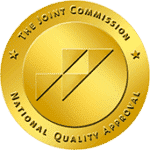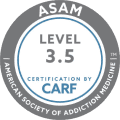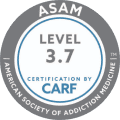Opioid Drug Use and Addiction Rates in Massachusetts
Across the United States, opioid drug use and addiction rates are on the rise. Unfortunately, the increase in illicit drug use is also linked to a rise in opioid-related deaths.
According to the Centers for Disease Control and Prevention, drug overdose deaths across the U.S. increased 5% between 2018 and 2019. In 2019, there were 70,630 drug-related deaths across the nation.
Of that number, more than 70% were opioid-related. Since 1999, over 500,000 people have lost their lives to opioids in the U.S.
This concerning trend is widely recognized as a public health crisis. As national averages related to use, addiction, and opioid overdose trend upward, it’s important to look at the long-term impacts on individual states.
The opioid crisis has greatly impacted the state of Massachusetts. Drug abuse throughout the state is something that is consistently addressed by residents and politicians alike.
Opioid overdose deaths across Massachusetts have followed a trajectory similar to that seen in the rest of the country. These cases are often linked to heroin addiction as well as fentanyl use and associated mental health conditions.
Opioid drug use and addiction rates in Massachusetts provide insight into problematic trends in society. From the accessibility of prescription opioids to illicit drug use that leads to deaths in Massachusetts, every drug overdose is a tragedy.
Opioids have long been a substance of abuse throughout the state. However, in recent years the arrival of stronger synthetic opioids on the market has been problematic.
The highest rates of death are linked to fentanyl and heroin. These varieties of illicit drugs have propelled the Massachusetts opioid crisis into a renewed spotlight.
A Closer Look at Addiction Rates in Massachusetts
Massachusetts is situated along the pristine East Coast of the country. It’s known as a thriving hub for commerce, business, and family life.
Over 7 million people call the Bay State home. This population makes it the 15th most populous state in the nation.
Massachusetts has a reputation for great livability. However, the state still harbors significant drug and alcohol abuse.
According to the Behavioral Health Barometer, opioid drug use and addiction rates in Massachusetts are higher than the national average.
The year 2015 was a particularly grim landmark year in the state. At that time, The Boston Patch reported that Massachusetts ranked sixth in the U.S. for overdose deaths.
The National Institute on Drug Abuse reported that nearly 88% of drug-related deaths in 2018 in Massachusetts involved an opioid. Of those deaths, 90% involved the use of a synthetic opioid.
The Massachusetts Department of Public Health has closely tracked opioid drug use and addiction in Massachusetts as issues have grown. In 2020, the department reported 2,035 opioid-related overdose deaths.
As of March 2021, there were 507 opioid-related overdose fatalities reported. This statistic represents a 2% increase compared to the same timeframe in 2020.
Increased opioid drug use and addiction in Massachusetts have been seen throughout the COVID-19 pandemic.
The rise has come with some severe consequences. The Massachusetts Department of Public Health noted a 5% increase in opioid-related deaths between 2019 and 2020.
Fentanyl is often pinpointed as a primary cause of overdose deaths across the state. A 2020 toxicology report by the state health department showed that fentanyl was noted in over 92% of opioid overdose deaths.
The statistics are grim but not surprising in light of fentanyl’s potency. This particular opioid can be up to 100 times stronger than morphine.
Access to street-sold fentanyl has increased in Massachusetts over the last few years. This increase may be due to the state’s placement along a major northeast drug trafficking route.
Who Is Affected?
Increased opioid drug use and addiction rates in Massachusetts are prevalent throughout the state.
With that being said, opioid-related death rates are more frequently reported among Black and Hispanic populations than the national average for all races.
The Massachusetts Public Health Department reported a 70% increase in opioid-related overdose deaths among Black men in Massachusetts in 2020. The national average of opioid-related deaths across all races is 13.3 deaths per 100,000 people.
Unfortunately, Massachusetts typically sees Black and Hispanic fatalities above the national average every year.
What’s Provoking an Increase in Opioid Drug Use?
Massachusetts has consistently had one of the highest opioid-related death rates in America for the past several years. Despite policy changes and initiatives, the number continues to rise. The question that remains is why?
In 2021, researchers are looking at several possibilities. Among the primary culprits for the rising opioid drug use and addiction rates in Massachusetts is the accessibility of illicit fentanyl.
According to the Drug Enforcement Administration, Massachusetts had the second-highest number of law enforcement reports specific to fentanyl use in the nation in 2017.
At that time, Massachusetts was coming in just behind numbers reported in Ohio. In 2016, Massachusetts had the third-highest number of fentanyl-related deaths in the United States.
An increase in fentanyl accessibility is blamed on the state’s location within a primary drug route, but there’s likely more to the story.
Recently, opioid users have reported mixing fentanyl with other drugs and alcohol more frequently. Combining these powerful substances creates potent and often fatal results.
Opioid drug use and addiction rates in Massachusetts are also being linked to a steady decline in jobs. The last few years have seen opportunities in both manual labor and manufacturing sectors diminish across New England.
With a decline in jobs across the state comes a subsequent increase in poverty. It’s believed that these factors are fueling a growing opioid crisis across the state.
Fentanyl stands out as a primary factor in usage, addiction, and overdose deaths. However, heroin is just as impactful.
Heroin is the second most common cause of opioid-related deaths across Massachusetts each year. It’s also frequently combined with other drugs to create potent and fatal cocktails.
Illicit opioid use is undoubtedly problematic. With that being said, there is progress being made on the prescription opioid front.
The health department reported that in 2018, physicians across the state prescribed 35.5 opioid prescriptions for every 100 people treated. This rate is far lower than the national average of approximately 51.4 opioid prescriptions per 100 patients.
What’s Being Done to Turn Things Around?
Across Massachusetts, residents and politicians are working in tandem to find solutions to the growing opioid crisis.
Some efforts are comprehensive initiatives. Others are specialized and community-focused to reach the most vulnerable individuals across the state.
Massachusetts has several prescription-monitoring programs in place to combat the opioid epidemic. These programs track patients who are moving between physicians to secure multiple opioid prescriptions.
The program alerts physicians to opioid-related concerns with patients. In this way, it allows physicians to make more informed prescription choices.
Legislators are also working on bills to fight the effects of increased opioid use and abuse. The Act Relative to Substance Use, Treatment, Education, and Prevention is proving particularly impactful.
This act supports prescription monitoring programs and mandates drug disposal requirements. It also finances opioid awareness programs across the state. Under this act, there’s a seven-day limit on any new opioid prescriptions.
The state is also putting measures in place to encourage residents to report opioid overdoses. These measures reduce reporter fear of repercussions.
Good Samaritan laws in Massachusetts now protect those reporting an overdose from associated drug-related charges.
Similarly, those who witness an overdose are allowed to administer naloxone without legal risk.
The Overdose Education and Naloxone Distribution Program trains first responders and residents on how to administer naloxone. It also teaches participants how to access naloxone.
In many communities across Massachusetts, prescription drop box locations are being implemented and promoted. These drop boxes are a safe place to dispose of prescription opioids.
This proliferation of safe disposal boxes ensures that unused opioids aren’t used for recreational purposes.
The Massachusetts opioid crisis is also being fought through the Massachusetts Opioid Abuse Prevention Coalition. This grant program is helping to reduce opioid abuse and addiction by funding local coalitions.
It provides financial support to educational services focused on opioid addiction. The program also provides support to addiction prevention programs state-wide.
Additionally, the state of Massachusetts hosts a variety of rehabilitation and recovery centers to help those struggling with opioid addiction.
These centers offer services that help patients manage their addiction through comprehensive treatment.
Many of these facilities offer family-based programming to make sure loved ones can support a recovering addict to the fullest.
Accessing the Help You Need When You Need It
If you or a loved one is struggling with opioid use or addiction, the team of caring professionals at The Haven New England is here to help.
Whether you’re looking for a specialized treatment program, therapy, dual diagnosis treatment options, or after-care planning, our many services have you covered.
Reach out today to learn more and to speak with one of our representatives. We’re here to help you take back the life you love and deserve to live.



